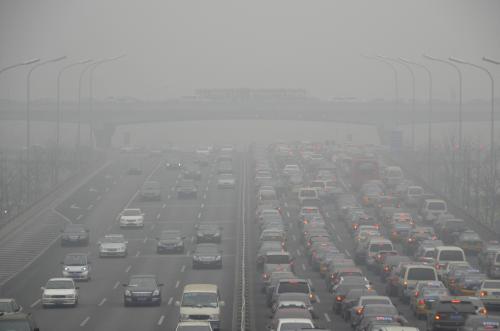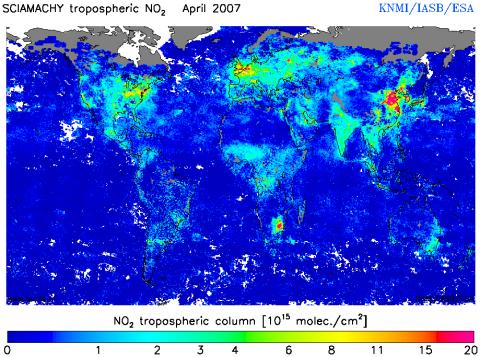Air quality on the global scale seems to be deteriorating
Most citizens living in modern societies are aware of hazards associated with polluted living conditions. That's probably what led industrialized countries to change their policies and to more efficiently manage their emissions, by this way maintaining a sustainable air quality.
Yet on the global scale, air quality seems to be slowly deteriorating and the situation is particularly delicate in many cities of the new emerging countries where impacts of pollutants on health are of alarming proportions.
Many mega-cities in developing countries suffer from heavy air pollution, to a large extent due to the explosion of traffic.
Air pollution as a result of industrialization and urbanization all over the world
As a result of rapid industrial growth and urbanization in many industrializing countries during the last decades, air pollution has become a major environmental issue with a potentially important impact on climate change on the global scale.
Thus, urban pollution is poisoning:
- regions combining a high productivity with a high population density such as the Eastern USA, Europe and Japan, the primary industrialized countries
- many booming economies of emerging industrialized countries like China, India, Indonesia, etc.
In this context, the quality of the air we breathe has become a vital topic for world citizens.
Large cities like Mexico, Beijing, Shanghai, New York, Johannesburg, etc., as well as the main industrial regions like the Ruhr Basin in Germany, the Benelux, the Po river valley in Italy stand out as severely polluted areas and are consequently clearly identifiable on air pollution maps, as seen for example in the mean global distribution of nitrogen dioxide (NO2) in the troposphere (see figure 2).
A few atmospheric species related to air quality
- Nitrogen dioxide (NO2), already notorious as one of the main causes of photochemical smog and acid rain, is also responsible for respiratory tract irritation problems (it can enhance asthma, chronic bronchitis, etc.) and other health ailments.
This gaseous compound is mainly produced by combustion processes in industrial plants and car engines. - Sulphur dioxide (SO2) also contaminates the lower atmosphere. Although volcanic eruptions sporadically release very large amounts of this gas, the largest source of sulphur compounds is the combustion of fossil fuels (coal and oil with high sulphur content) as well as several industrial processes (e.g. copper smelting).
Once in the atmosphere, this gas is oxidized into sulphuric acid which rapidly combines with water to form fine droplets, i.e. sulfate aerosols.
Natural emissions of air pollution
However, next to emissions due to industrial activities, fossil fuel and biofuel use, it is worth noting that natural emissions also exist, for instance:
- volcanic activity
- sea salt
- lightning strokes
Forest and savanna fires are also responsible for sometimes extremely large emissions of pollutants. These fires have to a large extent an anthropogenic origin: for example, deforestation and traditional agricultural practices (slash and burn) for fertilizing soils are clearly due to human activities, and it is estimated that purely natural fires (e.g. initiated by lightning) represent only a very small part of total emissions.





